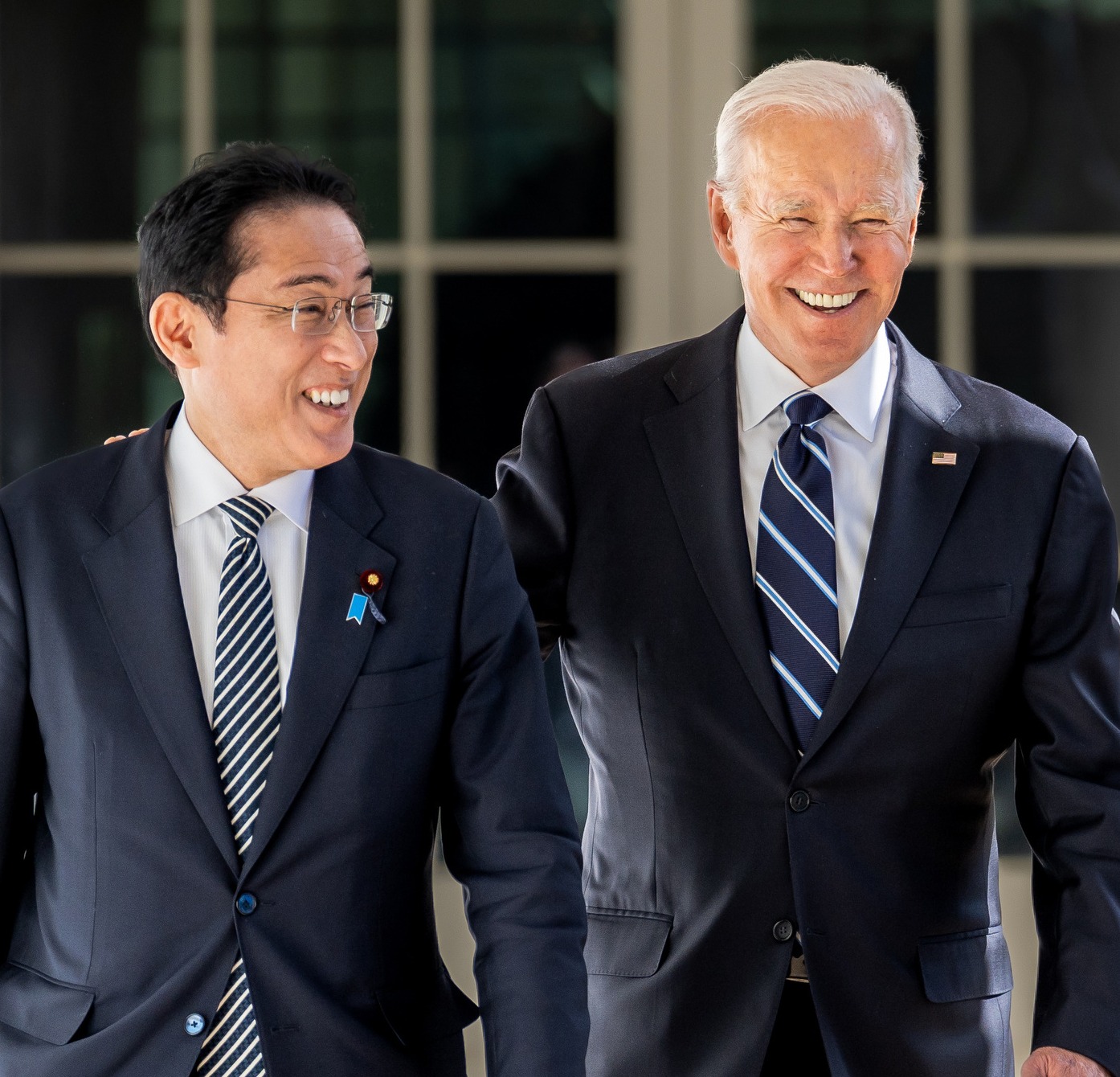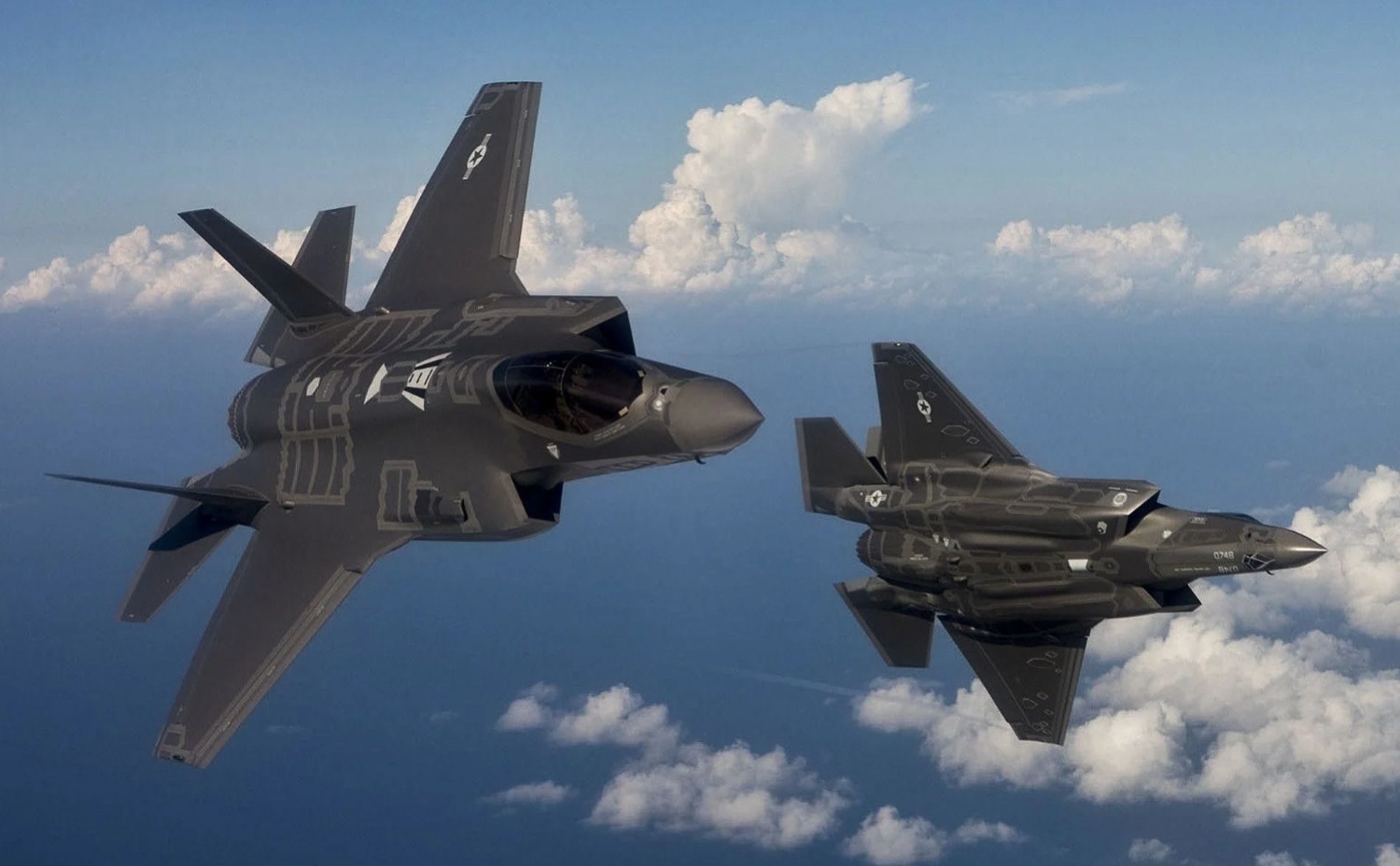As the Russia-Ukraine war drags on, the United States has started talks with Japan to collaborate on more military support for the embattled nation that has recently lost some ground to Moscow.
Japanese publication Yomiuri reported that the US and Japan are discussing working together on military hardware to give Ukraine more weapons and find ways to maintain US fighter jets and warships in the Indo-Pacific region.
According to the Japanese daily, which cited government sources, the two allies are attempting to prepare a plan in advance of Prime Minister Fumio Kishida and President Joe Biden’s meeting scheduled in Washington on April 10. The summit is expected to focus mainly on expanding Japanese support for the US stockpile.
The United States has promised to provide Ukraine with air defense systems and artillery ammunition to repel a Russian invasion, but American armament manufacturers are finding it difficult to meet the demand. There is concern in Washington that its stocks of missiles and ammunition are drying up as it caters to Ukraine in the protracted war.
Since the war began in February 2022, Japan has been less than keen on providing military aid to Ukraine. In May 2023, Japan pledged to send 100 military vehicles to Ukraine to make assistance more useful as compared to previously transferred helmets and hazmats.
Since Russia began its invasion, Japan has given the country food rations, helmets, gas masks, hazmat suits, bulletproof vests, and gas masks.
Japan, having lost the Second World War and enacted a pacifist constitution, has given billions of dollars in nonlethal aid, support, and loan guarantees to Ukraine, but not in the form of armaments.

In December last year, Japan announced that it would transfer its Patriot air defense missiles to the US following a change in its arms export rules. Previously, Tokyo restricted the export of licensed equipment and parts from Japan to the country holding the manufacturing license. However, the new regulations also allow it to ship completed goods.
In the short term, easing Tokyo’s limitations on military exports would facilitate the US and European countries supplying weapons to Ukraine. However, in the long run, it is expected to create more opportunities for Japan to sell weapons elsewhere, which might make the offer more lucrative for Tokyo.
Additionally, to their mutual benefit, Kishida and Biden plan to step up their complimentary relationship and explore methods to fortify their defense equipment supply network, keeping China in mind.
The US and Japan have been discussing ways to bolster support for Ukraine for almost a year now. In June last year, the Wall Street Journal reported that the Asian country was considering supplying 155 mm artillery shells to Ukraine under a 2016 pact that points to sharing ammunition as part of its longstanding security alliance with the United States.
As per the latest Yomiuri report, Tokyo and Washington are also thinking about expanding a deal where Japanese businesses would routinely maintain and repair US military hardware. It further stated that this issue could be discussed at the summit.
The publication further specified that the F-35A fighter jet and other Navy vessels forward-deployed to Japan, together with the US Seventh Fleet, are potential candidates for the project. This would help Tokyo bolster its defense production and technologies while cutting down on the US’s maintenance times.

The report comes days after Russia made some significant gains in Avdiivka last month, triggering a withdrawal of Ukrainian troops from the city to the villages on the fringes.
However, as reports emerge of the Russian offensive losing momentum, additional military supplies and fortification of defenses in Ukraine could prove to be beneficial for the Ukrainian troops.
Russian Offensive Losing Momentum
With the fall of Avdiivka last month, Kyiv’s beleaguered battalions are establishing new defensive lines, and reports suggest that the recent Russian advance on the eastern front of Ukraine is slowing.
After years of hard warfare over the fortified Donetsk front in the country’s east, the Ukrainian military withdrew from Avdviivka in February, seemingly to avert the predicted collapse of local defensive lines. While limited Russian military gains have been made in various locations along the Donetsk front, Ukrainian lines have not been broken through as a result.
According to reports, Russia’s advance has stalled around the Donetsk settlements of Berdychi, Orlivka, and Tonenke, where attacks have proven more challenging due to the open terrain beyond Avdiivka. According to reports, Kyiv has sent some of its finest forces — some equipped with tanks and armored cars produced in the United States — to blunt the Russian advance in this area.
Speaking to Ukrainian television last week, Dmytro Lykhovyi, the spokesman for the Tavriisk eastern military organization in Ukraine, stated that the situation in the Avdiivka direction had stabilized and the advance had stopped.
“The Russian military is making small movements in this direction, which are local,” Lykhovyi said. “The most active is the Novopavlivskiy direction, where the Russian military is concentrating its main efforts after the withdrawal of the Ukrainian troops from Avdiivka.”
EurAsian Times could not independently verify these claims. Until last week, several accounts suggested that after occupying Avdiivka, Russian forces were going for the villages that the Ukrainian troops had fallen back to.
The United States and Europe have both fallen short of providing enough military support at a fast enough pace. The Biden administration, for one, is struggling to send aid due to an internal gridlock with the Republicans.
Ukrainian President Volodymyr Zelensky warned the West in February that “Keeping Ukraine in the artificial deficits of weapons, particularly in a deficit of artillery and long-range capabilities, allows [Russian President Vladimir] Putin to adapt to the current intensity of the war.”
- Contact the author at sakshi.tiwari9555(at)gmail.com
- Follow EurAsian Times on Google News




